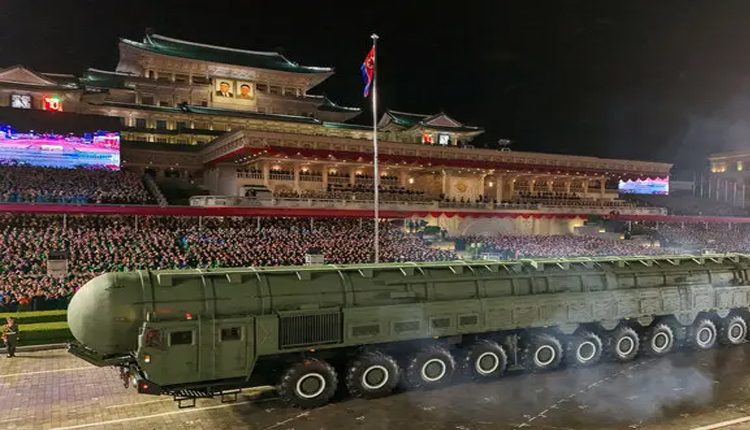In a rain-soaked spectacle of power, North Korean leader Kim Jong-un orchestrated a grand military parade in Pyongyang on Friday night, marking the 80th anniversary of the Workers’ Party of Korea.
The event unveiled an arsenal of cutting-edge weapons, headlined by the Hwasong-20 intercontinental ballistic missile (ICBM), touted as a rapid-strike threat to the United States.
Addressing the parade, Kim declared that his forces must be formidable enough to deter any intruder from breaching North Korean borders. The display, attended by high-ranking officials from China and Russia, signalled a deepening anti-Western axis, with Beijing’s Premier Li Qiang and former Russian President Dmitry Medvedev among the dignitaries.
At the heart of the showcase was the solid-fuel Hwasong-20 ICBM, first mentioned by Kim in September ahead of his Beijing visit. Covered during the procession, this missile promises quick launches and evasion of detection, building on North Korea’s 2017 Hwasong-14 debut. Experts note it’s still in development but could bolster Kim’s leverage in nuclear negotiations.
The parade also featured a 600mm nuclear-capable multiple launch rocket system, pilotless drone units for precision strikes, and short-range missiles equipped with hypersonic glide vehicles.
These advancements come amid reports of North Korea supplying troops, missiles, and artillery shells to Russia in exchange for enhanced weapon accuracy.
Kim has shunned US talks since 2019, rebuffing President Donald Trump’s overtures unless Washington eases pressure on his nuclear programme. He warned that any US military buildup on the Korean Peninsula would provoke armed retaliation, escalating global tensions.
As Pyongyang’s defiance grows, the world watches warily, wondering if this parade is mere posturing or a prelude to bolder provocations.



Comments are closed.